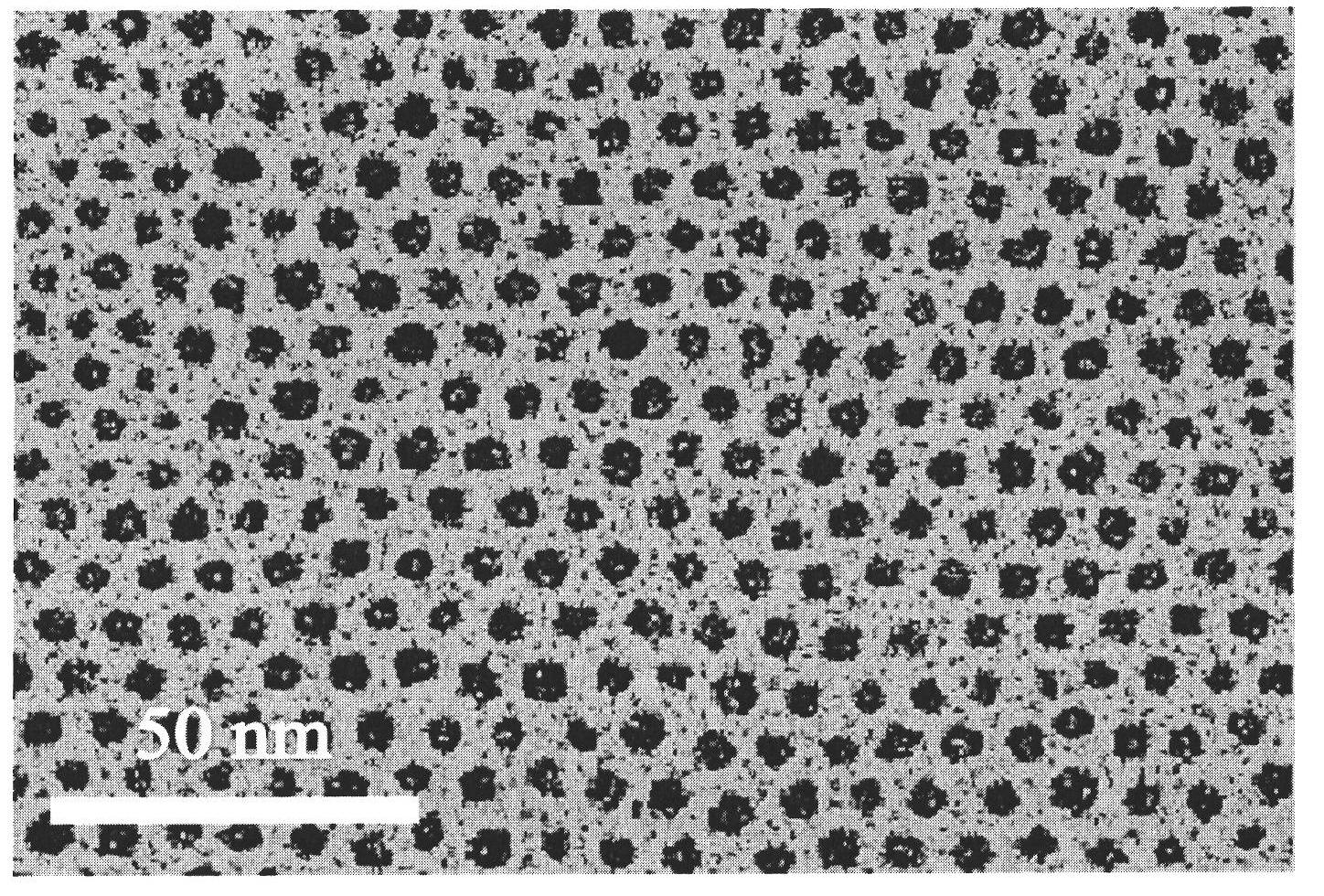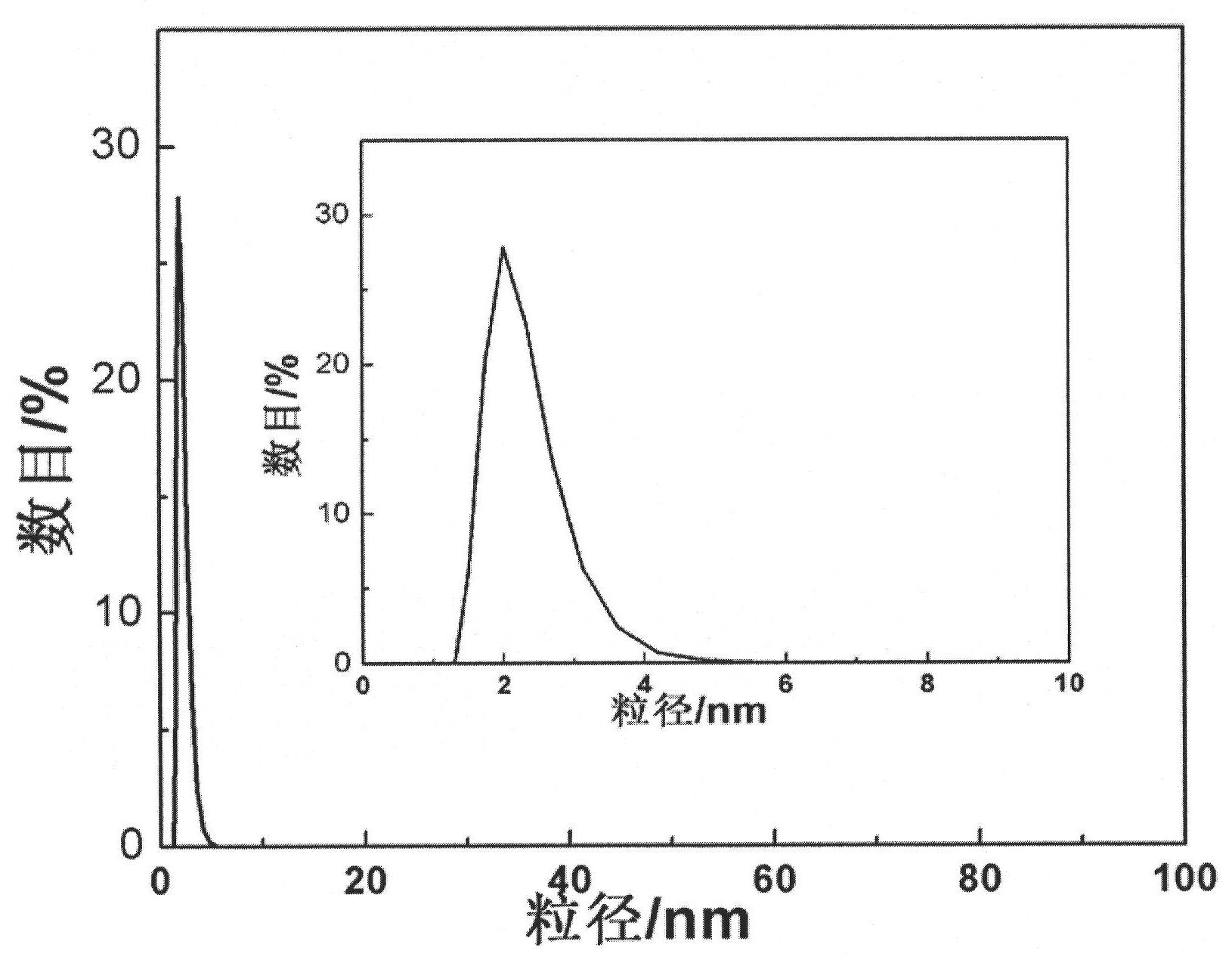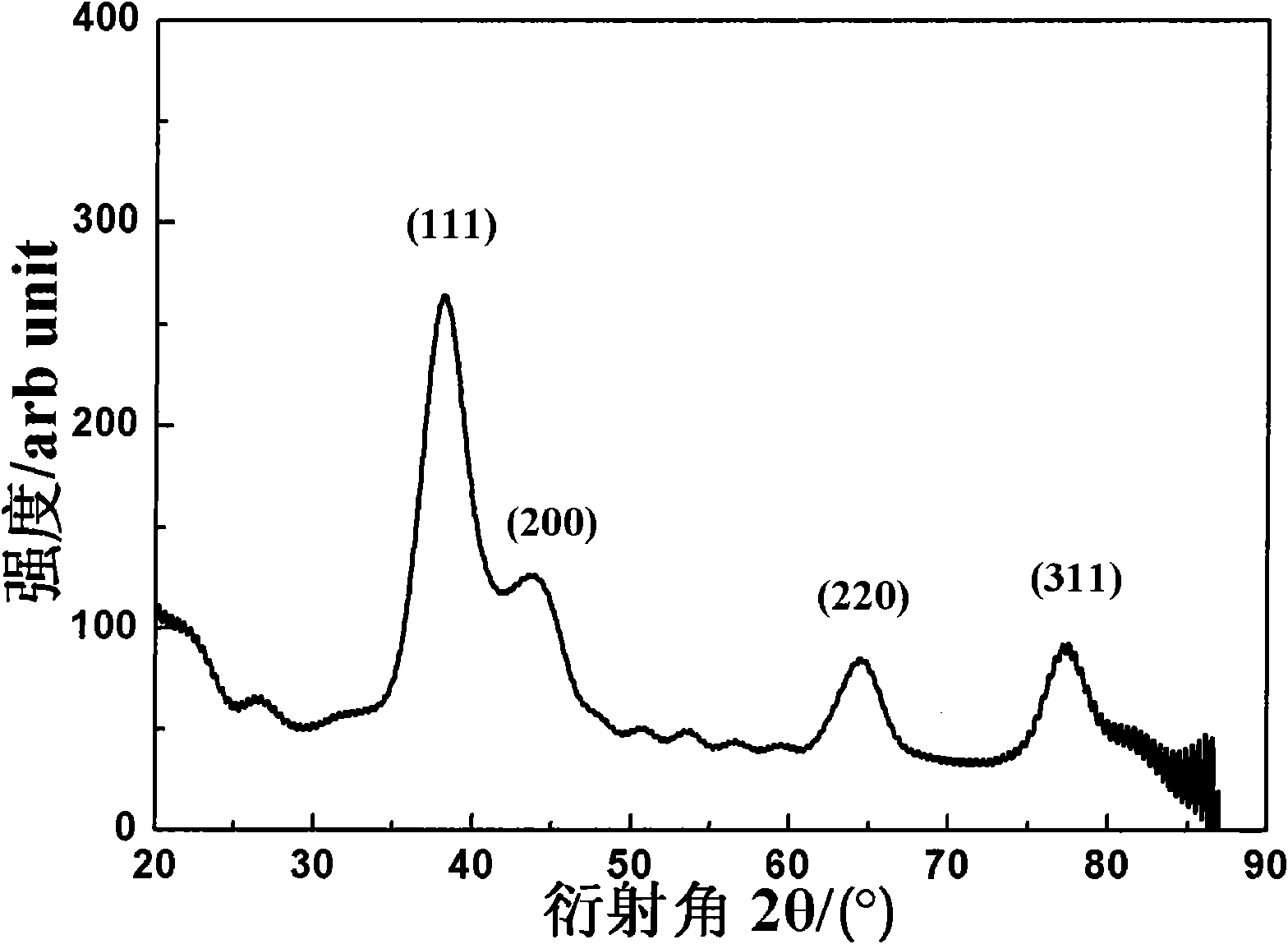Method for preparing nano silver conductive ink
A conductive ink and nano-silver technology, which is used in inks, printed circuit parts, metal pattern materials, etc., can solve the problems of hindering the development of printed electronics technology, excessively large silver nanoparticles in ink, and limited selection of substrates. The effect of good conductivity, short reaction time and mild reaction conditions
- Summary
- Abstract
- Description
- Claims
- Application Information
AI Technical Summary
Problems solved by technology
Method used
Image
Examples
Embodiment 1
[0027] 2.01g silver laurate, 0.5g 2-nonenylsuccinic anhydride, 10ml deionized water, adjust the pH of the solution to 9-10 with ammonia water, and gradually raise the temperature to 30-100°C until the solution is clear and transparent. Then, the temperature was lowered to room temperature, 0.346g of vitamin C was added, and after 20-30 minutes of continuous stirring reaction, the solution turned brownish black, and stable nano-silver conductive ink (7wt%) could be obtained. The conductive ink was spin-coated on the polyimide film and sintered at 150° C. for 30 minutes to obtain a conductivity of 20.3 μΩ·cm.
Embodiment 2
[0029] 15.7g of silver acetate, 9.3g of octadecanoic acid, 100ml of deionized water, adjust the pH of the solution to 9-10 with ammonia water and sodium hydroxide, and gradually raise the temperature to 30-100°C until the solution is clear and transparent. Then, it was cooled down to room temperature, 1.13 g of sodium borohydride was added, and after 20 to 30 minutes of continuous stirring reaction, the solution turned brownish black, and stable nano-silver conductive ink (10 wt %) could be obtained. The conductive ink was spin-coated on the polyimide film and sintered at 200° C. for 30 minutes to obtain a conductivity of 8.1 μΩ·cm.
Embodiment 3
[0031] 5.76g of silver nitrate, 2.4g of decanoic acid, 20ml of deionized water, adjust the pH of the solution to 9-10 with ammonia water and potassium hydroxide, and gradually raise the temperature to 30-100°C until the solution is clear and transparent. Then, cool down to room temperature, add 0.42 g of hydrazine hydrate, and continue stirring for 20 to 30 minutes, the solution turns brownish black, and stable nano silver conductive ink (15 wt %) can be obtained. The conductive ink was spin-coated on the polyimide film and sintered at 100° C. for 30 minutes to obtain a conductivity of 169.2 μΩ·cm.
PUM
| Property | Measurement | Unit |
|---|---|---|
| Diameter | aaaaa | aaaaa |
| Melting point | aaaaa | aaaaa |
Abstract
Description
Claims
Application Information
 Login to View More
Login to View More - R&D
- Intellectual Property
- Life Sciences
- Materials
- Tech Scout
- Unparalleled Data Quality
- Higher Quality Content
- 60% Fewer Hallucinations
Browse by: Latest US Patents, China's latest patents, Technical Efficacy Thesaurus, Application Domain, Technology Topic, Popular Technical Reports.
© 2025 PatSnap. All rights reserved.Legal|Privacy policy|Modern Slavery Act Transparency Statement|Sitemap|About US| Contact US: help@patsnap.com



